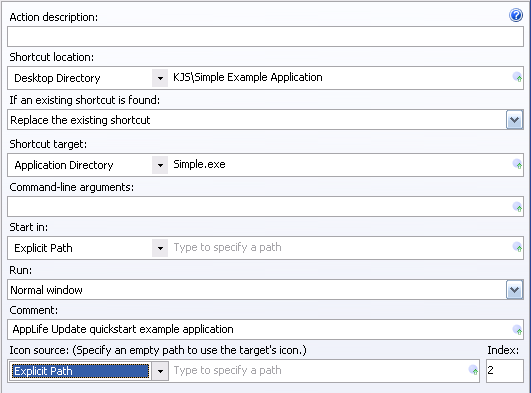

Action description – Descriptive text that can be used to identify this particular action in the Actions list.
Shortcut location – The disk location on the client to place the shortcut. This includes the name of the shortcut. Select the known folder on the client, then provide sub path and shortcut name. If this location does not end with an .lnk extension, it will be appended automatically.
If an existing shortcut is found – Identify what action should be taken if an identically named shortcut already exists in the defined location.
•Replace the existing shortcut (default)
•Skip the action and leave the existing shortcut
•Abort the update
Shortcut target – The disk location of the file that the shortcut is going to operate on. Select the known folder on the client, and then provide any sub path and the file name.
Command-line arguments – Add any arguments that are required to be passed to the shortcut target when this shortcut is executed.
Start in – Specify a path to set the start path property of the shortcut. Select the known folder on the client and specify any sub path information.
Run – Specify the mode that the target should launch in. Choices are:
•Normal window (default)
•Maximized
•Minimized
Comment – Specify the comment property of the shortcut. This value results in a shortcut tooltip.
Icon source – Specifies an assembly that contains an icon that can be displayed with the shortcut. Select the known folder on client, any sub path information, and the name of the assembly. Define the index of the icon within this assembly with the Index property. To use the default icon, set this property to Explicit Path.
Index – The index within the identified Icon source of the icon that is to be used with this shortcut.
See Create File Shortcut for more information.